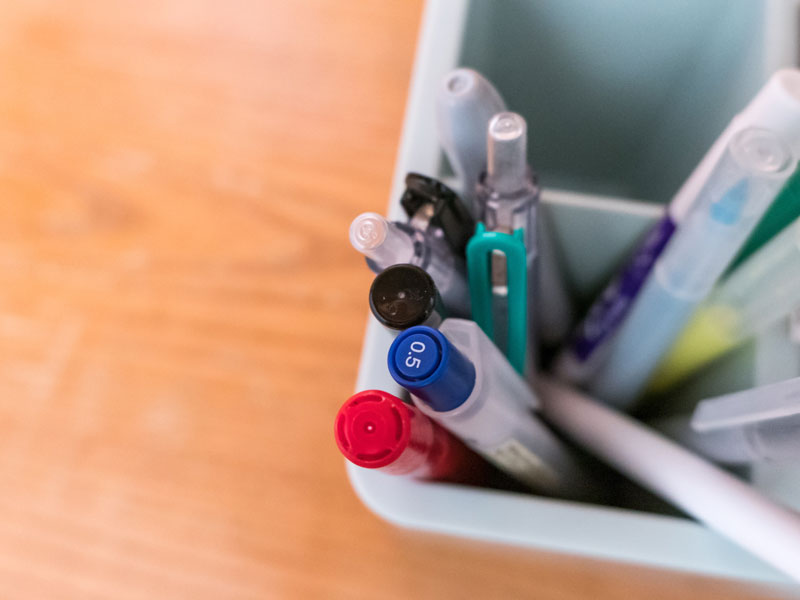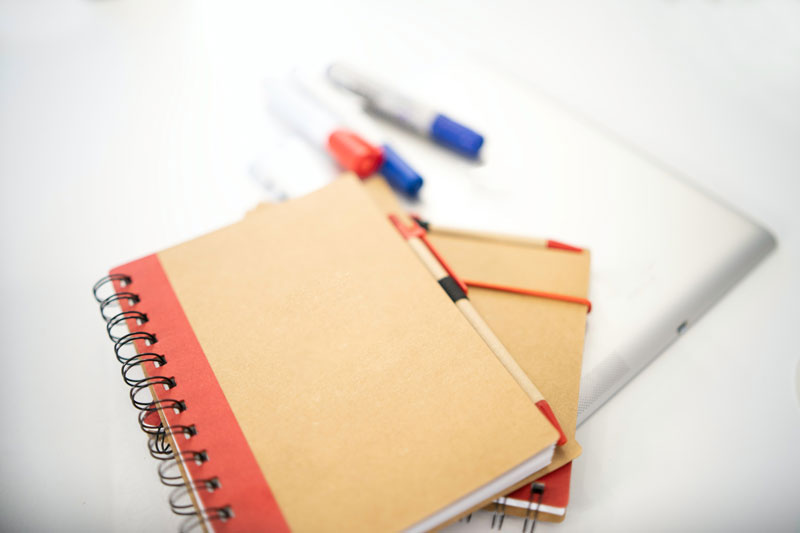Stationery
Six tips for reducing stationery waste at the office or at home.
Stationery items are pretty handy, and it can be difficult to go without them altogether. Whether used in our workspace or for studying, everyone can make small changes to erase stationery waste by using resources more sustainably. Take note of our six top tips to be eco-conscious with stationery.
1. Go paperless and print smarter
We can make a much bigger impact by avoiding printing, rather than focusing on recycling the paper afterwards – the recycling process is resource intensive (think about the emissions associated with collection, transport, processing and re-manufacturing of recyclable items). Make use of the University’s software like Microsoft Office Online and Adobe Acrobat to read, sign, share and collaborate on documents. Consider adding a ‘think before you print’ message at the end of your emails as a friendly reminder to your colleagues and friends.
2. Organise your stationery
At least once a year, pencil in a time to evaluate what stationery you already have before deciding if you need more. Organise office stationery and store it in a communal cupboard that everyone has access to. It will help the office be tidier, ensure everyone can find what they need when they need it, and help save money on unnecessary new pens, highlighters, post-it notes and notebooks.

Image above: Do you really need that many pens at your desk? Store excess pens in a communal spot so everyone in your office has access to make the most of resources.
3. Donate to reuse
If you no longer need items that are still in good condition, you can donate them to organisations that can give them a second life. Green Collect aims to reuse binders, highlighters, CDs, whiteboards, envelopes, and a whole range of items before upcycling, and then recycling if they need to.
4. Head to a stationery recycling point
Recycle writing instruments you no longer need for free at over 170 Officeworks stores or Community Collection Hub (like CERES in Brunswick East, Victoria) with TerraCycle. Pens, markers, highlighters and other accepted items will be collected to be recycled and given a second life.

Image above: Buy recycled and recyclable notebooks to reduce your impact.
5. Buy recycled AND recyclable products
Sharpen up when it comes to buying new stationery. There are many options for recycled or environmentally friendly products out there, such as bamboo or wooden pencils or notebooks made from recycled paper. When buying new, choose high-quality products that will last for a longer period of time, so you’re generating a lower amount, if any, waste (but try to buy recyclable items so materials can be kept out of landfill and turned into something new at end of life!) When it comes to technology, buy second-hand, and recycle your e-waste correctly. Staff can contact the E-Reuse Service to return old IT equipment.
6. Start a Green Team
One way to achieve more sustainable goals in your workplace or school is through the collaboration and support of your colleagues. Set goals throughout the year to manage your stationery and reduce your waste. For example, you can sign up for Green Impact, a sustainability program that supports staff and students to work together to lower your environmental impact, one step at a time.